Seasonal allergies, also known as hay fever or allergic rhinitis, affect millions, including me. I have created this guide to bring awareness to seasonal allergies, as well as provide you with all the information you need to minimize your allergic reactions and get back to enjoying the great outdoors. Let’s discuss the causes, symptoms, and treatment options available for you this allergy season.

As an Amazon Affiliate, I may get commissions on qualifying purchases.
Table of Contents
What are Seasonal Allergies?
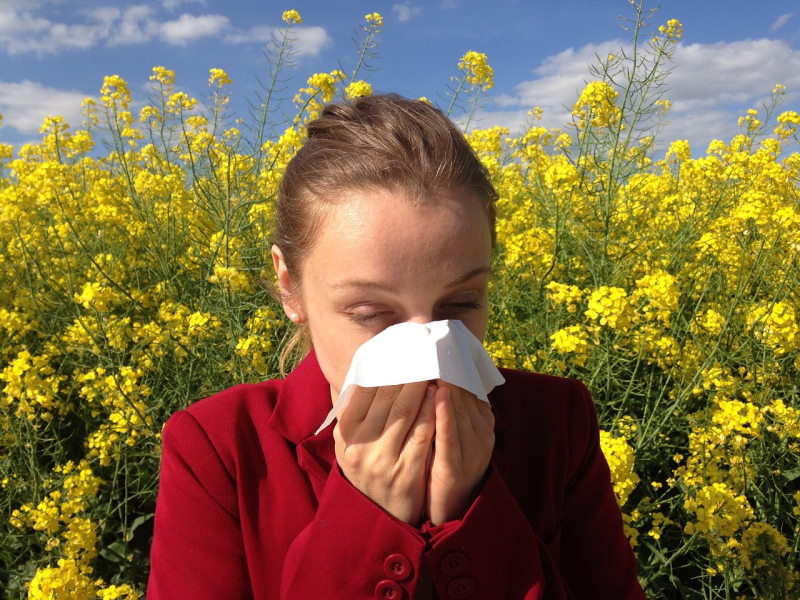
Seasonal allergies are allergic reactions that occur when the body’s immune system responds to allergens present in the environment, particularly during a specific allergy season such as spring, summer, fall, and winter. The immune system overreacts and produces antibodies, triggering the release of histamine and other chemicals that cause allergy symptoms.
Depending on what you are allergic to, you could have seasonal allergies all year (like me). Knowing what substances trigger your allergic reactions is the first step in managing your allergies.
Triggers of Seasonal Allergies
Seasonal allergies are caused by an allergic response (the immune system is activated) to substances such as pollen, mold spores, and certain grasses, trees, or weeds. Depending on where you live, or are visiting (allergens are even at the beach), you may be exposed to these triggers.
Pollen Allergy
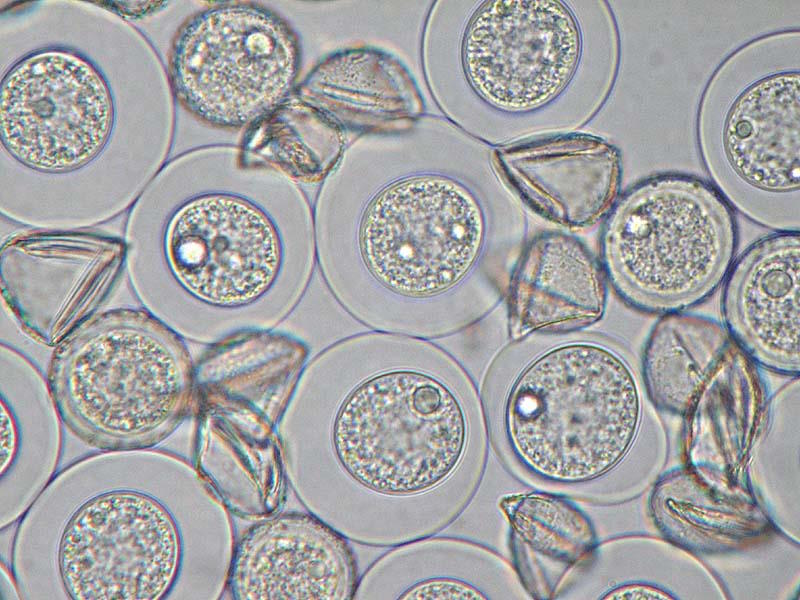
A Pollen allergy is one of the most common causes of seasonal allergies. Pollen allergies occur when the immune system reacts to airborne pollen grains from trees, grasses, and weeds. The symptoms usually occur during the spring and summer months.
I consider myself a bit of an expert on pollen allergies as I suffer from them the majority of the year. I have been allergy tested and I am allergic to almost all trees, grasses, and weeds.
Tree Pollen

For people who are allergic to tree pollen, exposure to these tiny pollen particles can cause a range of unpleasant symptoms. These symptoms are usually triggered by one of the following trees:
- Birch
- Cedar
- Juniper
- Maple
- Oak
Trees produce pollen to reproduce, and during the spring and summer months, when the weather is warm, pollen is released into the air. The most common tree to cause allergic reactions is the juniper tree.
Grasses

During late spring through summer, the levels of grass pollen in the air are typically high, which can trigger symptoms in people with grass allergies. The exact timing can vary depending on the region and climate, as well as the type of grasses that grow in the area.
Many different types of grasses can cause grass allergies, but some of the most common include:
- Bermuda grass
- Fescue grass
- Johnson grass
- Kentucky bluegrass
- Orchard grass
- Ryegrass
- Sweet vernal grass
- Timothy grass
Weeds
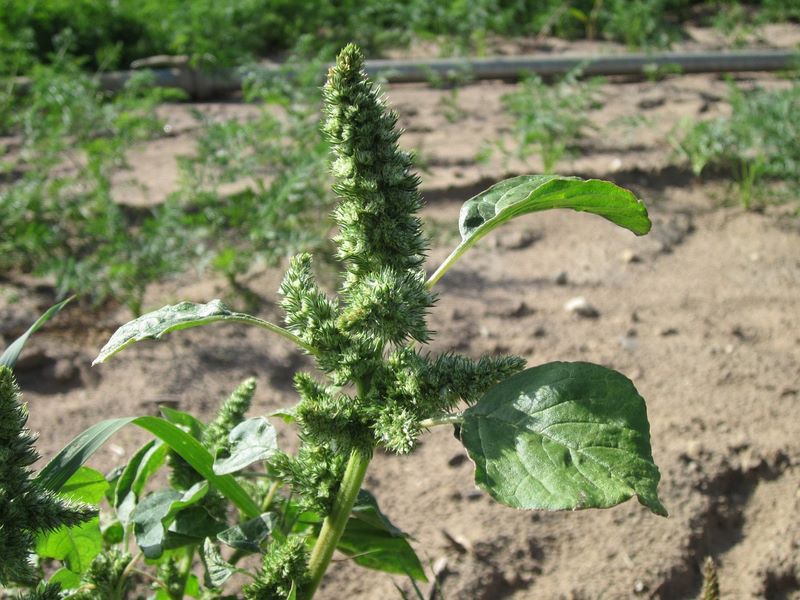
Weed allergy season can vary depending on the type of weed and the location. However, in general, weed allergy season is in late summer and early fall, from August to October. The most common weeds to cause an allergic response are:
- Cocklebur
- Pigweed
- Ragweed
- Russian thistle
- Sagebrush
Mold Allergy

Mold allergies are common during humid weather conditions and can cause symptoms throughout the year. Mold allergies are allergic reactions to mold spores that are released into the air. The most common allergy-causing mold types are:
- Alternaria
- Aspergillus
- Cladosporium
- Penicillium
- Stachybotrys
Dust Mite Allergy

Dust mites are microscopic creatures that live in house dust, bedding, and upholstery. When a person with a dust mite allergy comes into contact with these particles, their immune system releases histamine. Here are the most common species of dust mites:
- Blomia tropicalis
- Dermatophagoides farinae
- Dermatophagoides pteronyssinus
- Euroglyphus maynei
- Lepidoglyphus destructor
Pet Dander Allergy

Pet dander allergy occurs when the immune system reacts to proteins found in pet saliva, urine, and skin cells. It can cause symptoms such as itching, sneezing, and watery eyes. The most common pets that cause dander allergies are:
- Birds (including parrots, canaries, and budgies)
- Cats
- Dogs
- Ferrets
- Gerbils
- Guinea pigs
- Hamsters
- Mice
- Rabbits
- Rats
Allergy Cross-Reactivity

Allergy cross-reactivity occurs when the proteins in one substance are similar to the proteins in another substance, causing the immune system to react to both substances.
For example, someone who is allergic to birch pollen may also experience an allergic reaction to apples, as the proteins in birch pollen are similar to those in apples. This is because the immune system recognizes the similar proteins in both substances as the same, and produces an allergic response.
Symptoms of Seasonal Allergies

Seasonal allergies, also known as hay fever or allergic rhinitis, occur when the immune system overreacts to allergens in the air such as pollen from trees, grasses, and weeds. Here are some common symptoms of seasonal allergies:
- Coughing
- Fatigue
- Headache
- Itchy eyes
- Itchy nose
- Nasal congestion
- Postnasal drip
- Runny or stuffy nose
- Sinus pressure
- Sneezing
- Watery eyes
It is important to note that the severity and how the symptoms make you feel can vary from person to person, and some people may experience only a few symptoms while others may experience a combination of several.
Also, this is a list of the most common allergy symptoms, did you know that loss of taste can be a symptom of allergies? If you suspect you have seasonal allergies, it is best to consult a healthcare professional for an accurate diagnosis and appropriate treatment.
Causes of Seasonal Allergies
The root cause of why someone develops allergies is not specifically known. But, several known factors can increase a person’s risk of developing allergies, such as genetics and diet.
Genetics

As someone who is fascinated by science and technology, I am always interested in exploring the underlying causes of various health conditions, including seasonal allergies. One factor that can contribute to the development of allergies is genetics.
Research has shown that allergies tend to run in families, which suggests that there is a genetic component to their development. Specifically, certain genes may make individuals more susceptible to allergic reactions and sensitivities.
For example, some people may inherit a gene that produces an excess of IgE antibodies, which are involved in allergic reactions. Others may have genetic variations that affect the way their immune system responds to allergens, making them more prone to developing allergies.
Diet

Diet may play a role in the development of allergies in several ways. Firstly, some foods contain proteins that are similar in structure to those found in certain allergens, such as pollen or latex. When a person consumes these foods, their immune system may mistake the proteins for allergens and produce an allergic reaction. This is known as cross-reactivity.
Secondly, certain foods can increase the permeability of the gut lining, allowing allergens to pass through into the bloodstream more easily. This can trigger an immune response and lead to the development of allergies.
Lastly, research has suggested that a diet high in processed foods and low in nutrients can weaken the immune system, making it more susceptible to allergic reactions. Additionally, a lack of diversity in the diet may also increase the risk of allergies by reducing the exposure to beneficial bacteria and other components of a healthy diet.
Hygiene Hypothesis

The Hygiene hypothesis is based on the hypothesis that exposing yourself to certain bacteria and viruses in childhood can help train the immune system to recognize and tolerate harmless substances, thus reducing the risk of allergies.
However, with increased hygiene and sanitation today, we are exposed to fewer pathogens, which might lead to an immune system that is over-reactive to harmless substances, such as pollen or other environmental allergens.
Moreover, research suggests that exposure to a diverse range of microbes in childhood can help prevent the development of allergies. That’s because this exposure helps to strengthen the immune system and reduce the risk of allergic reactions.
Existing Health Conditions

Existing health conditions can increase the risk of developing seasonal allergies. You see, some health conditions, such as asthma and eczema, are closely related to allergies.
Many people with these conditions also have allergies. This is because allergies, asthma, and eczema all involve an over-reactive immune system that can cause inflammation in the body.
For example, if you have asthma, your airways are already inflamed and sensitive, making it easier for allergens like pollen to trigger an asthma attack. Similarly, if you have eczema, your skin is already inflamed and sensitive, making it more susceptible to allergic reactions.
Moreover, some medications used to treat existing health conditions, such as beta-blockers for high blood pressure, can also increase the risk of developing allergies. Beta-blockers can block the effects of epinephrine, a hormone that helps to counteract allergic reactions, making it more difficult for the body to manage allergies.
Diagnosis of Seasonal Allergies
Okay, folks, when it comes to diagnosing seasonal allergies, the doctor will start with the medical history. They want to know all about your symptoms when they happen, and what might be causing them. Then the provider will do a physical exam to check for things like red, puffy eyes or a congested nose.
Typically, they don’t stop there and they will likely do further testing. These tests can confirm the diagnosis and even pinpoint the specific allergens causing the trouble.
Skin Prick Test
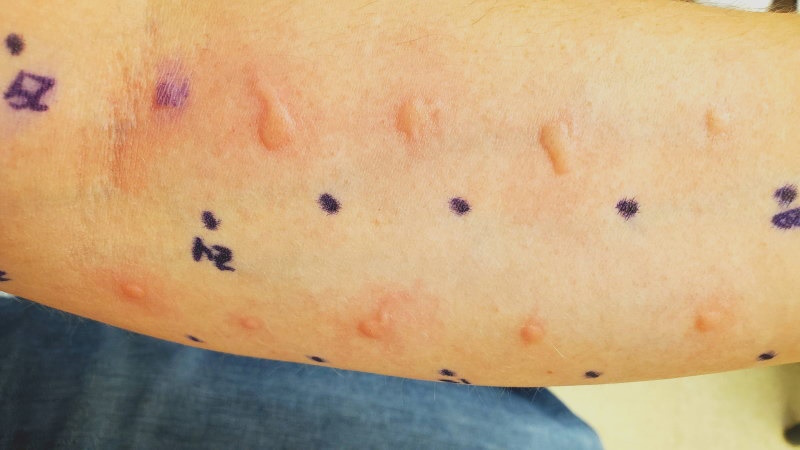
The skin prick test involves putting a teensy bit of the allergen on the skin and pricking it to see if there’s a reaction. My experience with this is that you will get quite itchy (if you have allergies) but you get to take an antihistamine immediately following the test.
Blood Test

Then there’s the blood test, where they analyze a blood sample for specific antibodies to allergens. In my experience, this is a straightforward test where they take a vial or two of blood and you get your results in a few days.
The blood test is not considered to be the most accurate test, but it can give you a good idea when trying to narrow down what you are allergic to.
Treatment Options for Seasonal Allergies

We’ve got some impressive seasonal allergy treatment options available to us nowadays. The most common options that I see being used are antihistamines, decongestants, nasal sprays, and allergy shots.
Antihistamines

By far the most common allergy treatment used is antihistamines. They are fact-acting, available over the counter, and affordable. Antihistamines work by blocking the effects of histamine, a chemical produced by the body in response to allergens.
Decongestants

Decongestants are a treatment option of choice for people who typically have blocked nasal passages, ear pain, and sinus pressure from their allergies. This medication reduces nasal congestion by narrowing the blood vessels in the nasal passages.
Nasal Sprays
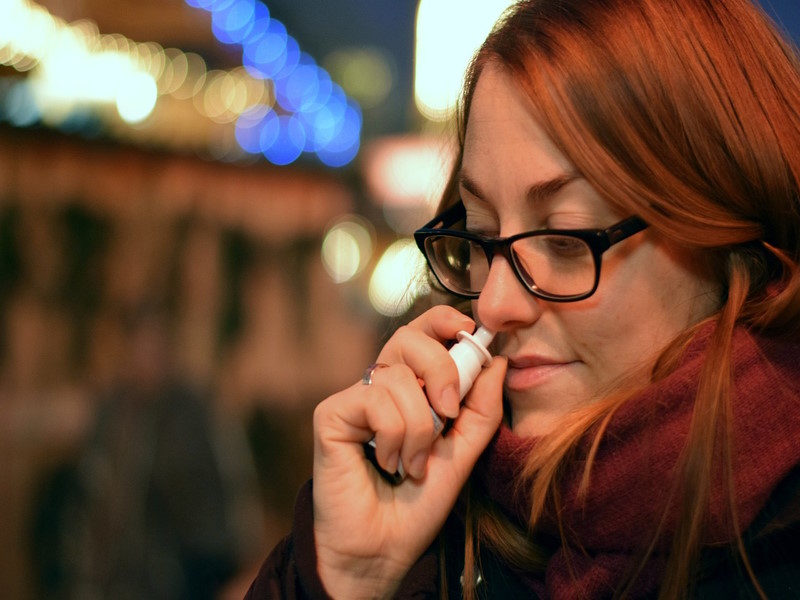
Nasal sprays are medications that are sprayed directly into the nose to relieve symptoms such as congestion and runny nose. There are several types of nasal sprays available, including saline sprays, steroid sprays, and antihistamine sprays.
Lotions and Creams

Lotions or creams can help manage allergies by providing relief to skin reactions caused by allergens. When an allergen comes into contact with the skin, it can cause a rash, itchiness, or hives.
Lotions or creams that contain anti-inflammatory ingredients, like hydrocortisone or calamine, can help to reduce redness, swelling, and itchiness, providing relief to the affected area.
Immunotherapy

Immunotherapy, also known as allergy shots, is a treatment that involves exposing the patient to gradually increasing doses of the allergen over some time. This helps the body build up immunity and reduce allergy symptoms.
Immunotherapy can be seen as a treatment or a prevention option for allergies, but you need to be committed. When I started getting allergy shots, I did not see any improvement until around the 6-month mark.
I have been getting immunotherapy for a few years now (maintenance phase), and the shots have allowed me to stop most of my allergy medications.
If allergy shots are not your thing, there are some alternatives to allergy shots that you can also consider.
Home Remedies
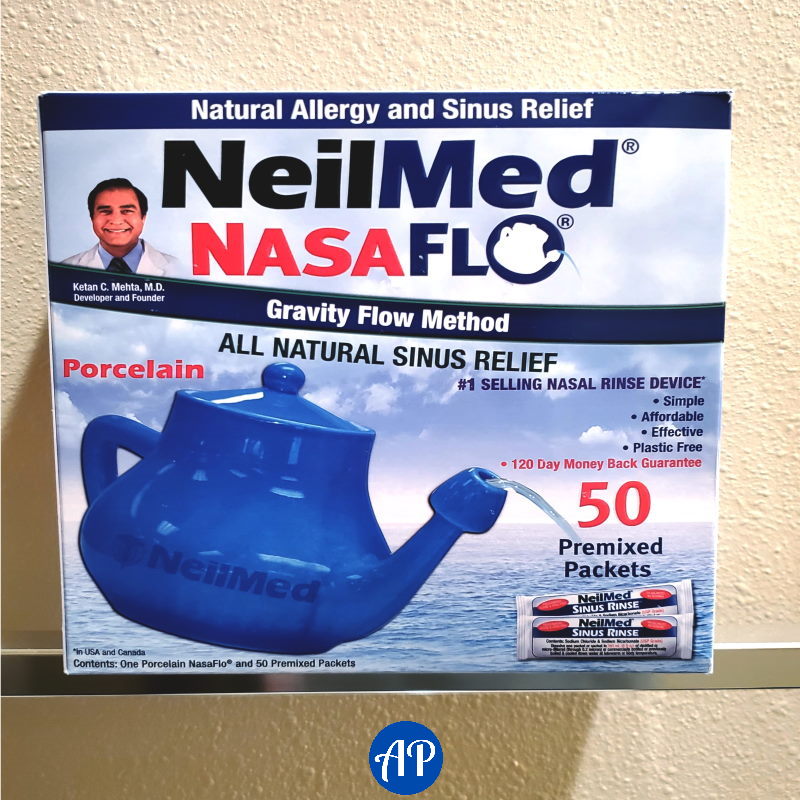
Home remedies are treatment options that you can try at home. The downside to home remedies is there is not a lot of data on how well they work, but that does not mean that they don’t work. You may want to try the following:
- Essential oils
- Local honey
- Probiotics
- Quercetin-rich foods
- Saline nasal rinse
- Steam inhalation
Home remedies may provide relief from allergies, but they should not be used as a substitute for medical treatment.
Curious about the image? That is my NASAFLO Neti Pot, which is my drug-free sinus cleaner of choice. If you have not tried one yet, they are a game changer! Worth a shot at under $15 bucks on Amazon.
Prevention of Seasonal Allergies
The best way to prevent seasonal allergies is to avoid exposure to the allergen, which is hard to do. So here are some tips to help you stay allergy-free:
Wear Protective Clothing

Protective clothing, such as gloves, masks, and coveralls, can create a barrier between our skin and allergens in the environment. This can be particularly important for people who work in industries where they may be exposed to allergens, such as agriculture, or hanging out in the garden.
Additionally, when you are outdoors, wear a hat and sunglasses to keep pollen out of your eyes and hair. You can also wear a mask to help filter out pollen and other allergens.
Now, I know what you’re thinking – protective clothing can be uncomfortable or inconvenient to wear. But, the benefits of protecting yourself from allergies far outweigh any inconvenience.
Consider Medications

When it comes to seasonal allergies, medications can be a real game-changer. Let’s face it, no one wants to spend their spring and summer sniffling, sneezing, and feeling miserable. But, fortunately, there are medications available that can help prevent or alleviate these symptoms.
Talk to your healthcare provider about the medications that may be right for you. With the right treatment plan, you can enjoy the beauty of spring and summer without the sniffles and sneezes.
Stay Indoors During Peak Pollen Times

I believe that there are many ways we can tackle the problem of seasonal allergies. One simple yet effective strategy is to avoid exposure to allergens altogether – and one way to do this is by staying inside during peak pollen times.
The peak pollen time tends to be early morning, usually between 5 a.m. and 10 a.m.
When plants release their pollen into the air, it can be difficult to avoid inhaling it. But by staying indoors during these peak pollen times, we can reduce our exposure and therefore reduce the likelihood of experiencing allergy symptoms
Keep Your Home Pollen-Free
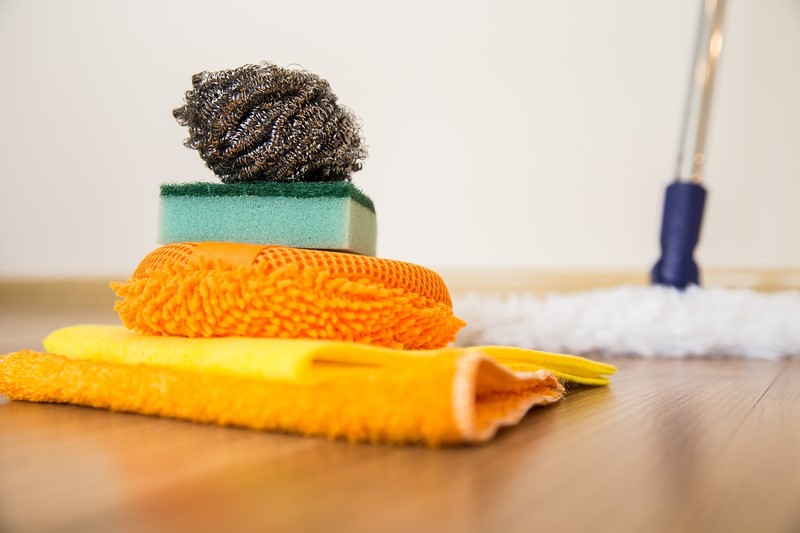
Keeping your home clean is an important factor in preventing allergies. When it comes to seasonal allergies, many allergens such as pollen, dust mites, and mold can accumulate in the home, causing discomfort and irritation.
One of the most effective ways to prevent allergies is to maintain a clean and dust-free environment. This can involve regular cleaning and dusting of surfaces, floors, and carpets, as well as washing bedding and linens frequently.
By keeping the home free of dust and other allergens, we can reduce the likelihood of allergic reactions and create a more comfortable living space.
Keep The Indoor Air Clean

Make sure to keep the air in your home clean by using an air purifier with a HEPA filter. HEPA filters are commonly used in air purifiers, vacuum cleaners, and HVAC systems to improve indoor air quality and reduce allergy symptoms.
They can be particularly effective for people with allergies or asthma, as they can help reduce exposure to allergens and improve respiratory health.
Our family has at least 4 purifiers running around the clock. Why? Because we are allergic to SOMETHING, all year long and we have one in each bedroom.
WINIX 5500 HEPA Air Purifier For Larger Areas
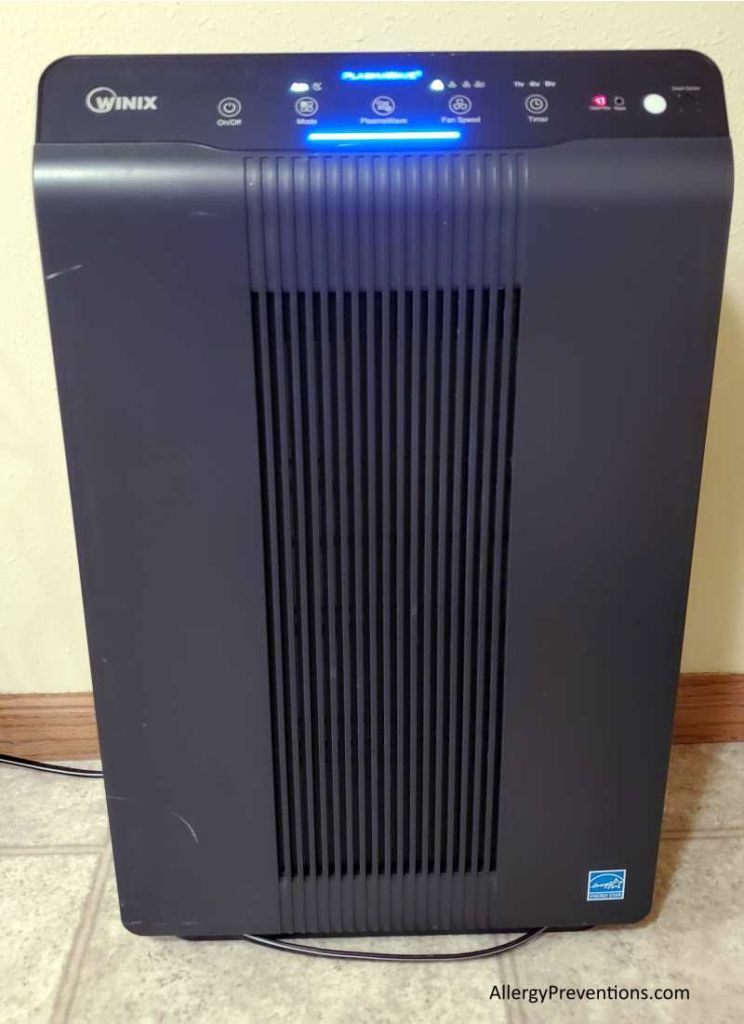
We bought this bad boy 6 years ago and he is still going strong. The WINIX is designed for larger areas of your home. We have ours in the living room and kitchen area.
Feel free to read my review on the WINIX, or dive right into the helpful Winix® page on Amazon.
Levoit Core Mini For The Bedrooms

We have bought 4 of these powerful air purifiers because they work. They are small enough to stay out of the way but strong enough to notice a difference in your allergies.
We have one in each bedroom to keep us sane and stop us from coughing all night or waking up with eye crusties from allergens attacking us as we sleep.
I don’t have a review on this HEPA filter yet, but the number of purifiers we have purchased should help with your decision. I would shop for the Levoit on Amazon, they have had the best price 4x in a row.

